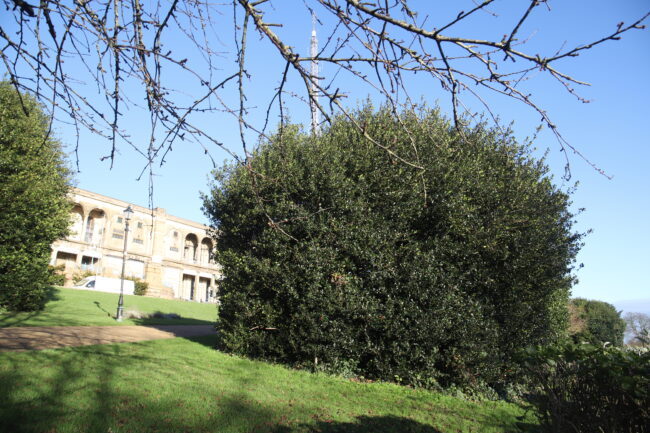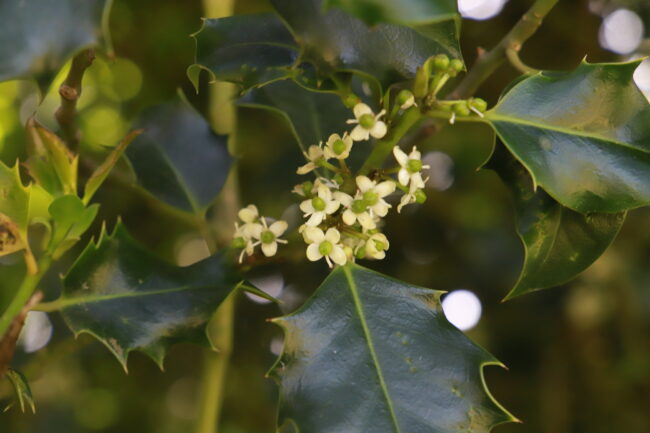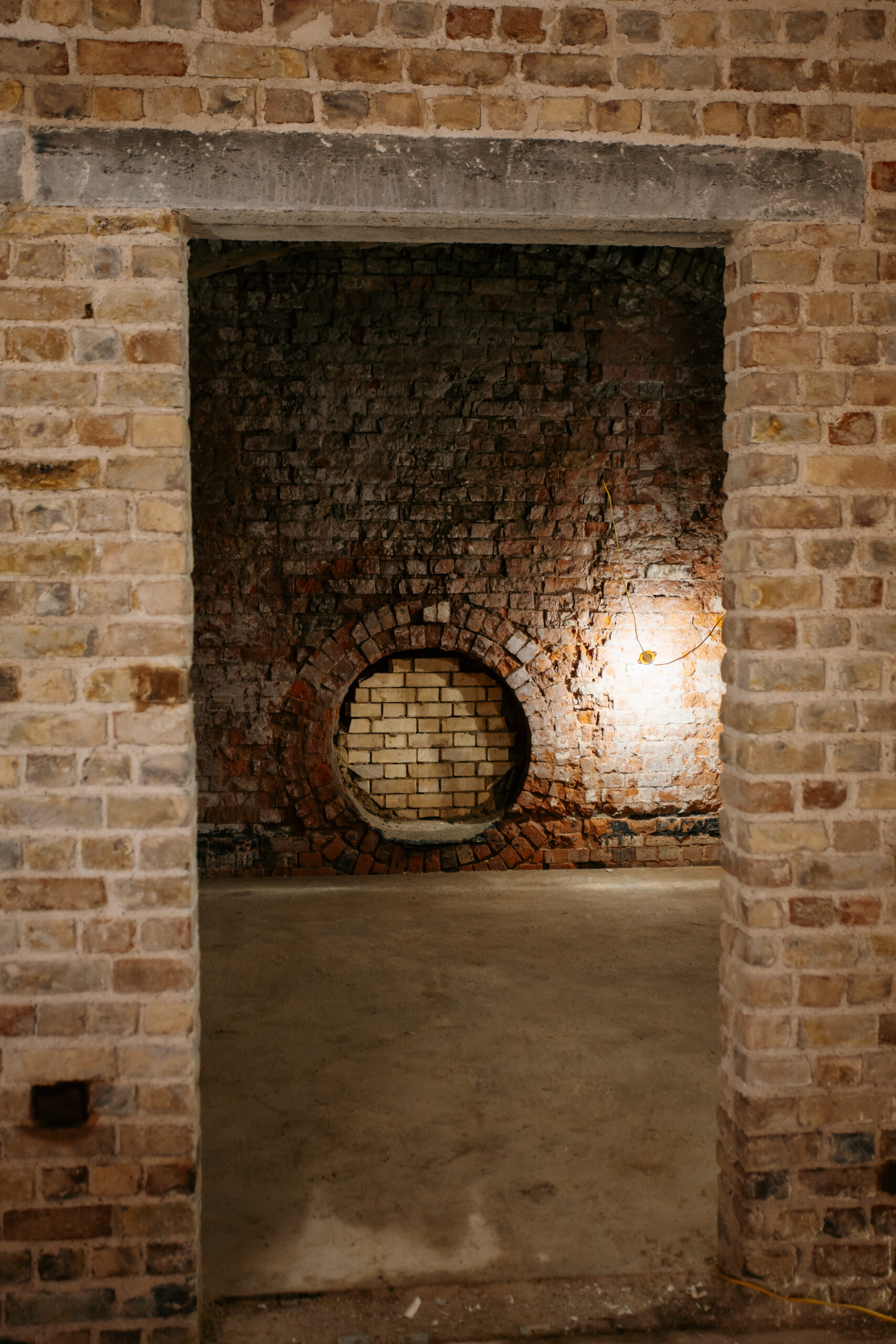If you are enjoying a festive stroll this December, see if you can spot our tree of the month, as described by Stephen Middleton from the Friends of Alexandra Park…
The holly and the ivy,
When they are both full grown,
Of all the trees that are in the wood,
The holly bears the crown.
This traditional folk carol announces our December Tree of the Month, the Common or European Holly (Ilex aquifolium).
Our tree can be found with quite a few other hollies on the South Slope below the rose window at a junction of paths at What3words spill.winter.quiet. The holly has been trimmed into a roundish form, but look inside and you can see the original tree.

Holly is known for its spiky leaves and, at this time of year, its red berries which are technically termed “drupes”. Half the holly trees will never produce any berries. This is because each tree is either male (no berries) or female (berries). Even if you have a female tree, there needs to be a male tree reasonably nearby to enable bees to pollinate the female tree in late spring.
The male and female flowers look similar at first glance, but the female flower has a green centre which develops into the berry. Each berry will contain four seeds. The berries are poisonous to humans although the birds happily tuck into them and the holly blue butterfly’s caterpillars also enjoy eating them.

As for the leaves, these are spiky to deter browsing mammals, but as these animals can’t reach up to the top of the tree, you will notice that the leaves near the apex of the tree have fewer spines.
Holly is often used as a hedge and the act of cutting it back mimics the effect of the mammalian attack so that the leaves stay especially spiky.
The leaves each last a few years on the tree before falling and taking quite a long time to degrade. They will, however, burn straight from the tree.
This tree is native to Europe (including the UK), western Asia and parts of China, but it is not fully hardy and can be killed by severe weather. They can grow to 20 metres tall, but are often cut back as is the case for our tree.
The wood is hard and fine grained and has been used for printing blocks, in Ireland to produce shillelaghs and, when stained, as a substitute for ebony.





